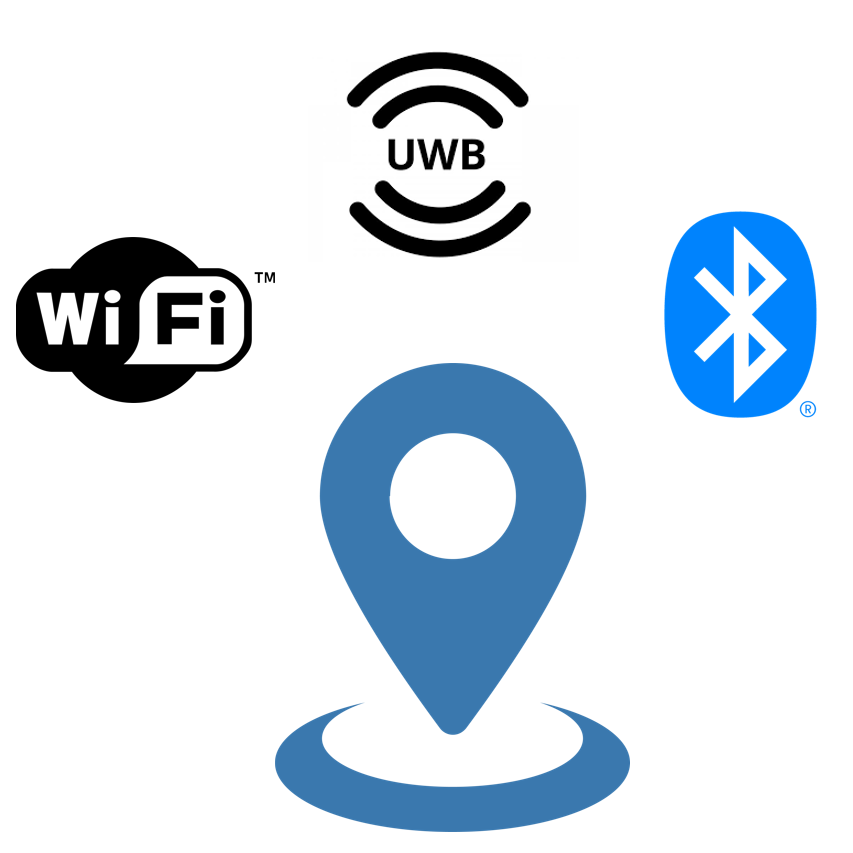In daily life, everyone is familiar with Bluetooth and Wifi communication. They are both wireless communication technologies. Now UWB wireless communication is gradually becoming popular with the promotion of AirTag, so what is the difference between Bluetooth, WiFi and UWB?
What is UWB?
UWB (Ultra Wide Band) ultra-wideband technology is a wireless carrier communication technology that uses a frequency bandwidth above 1 GHz. It does not use the sinusoidal carrier in the traditional communication system, but uses nanosecond non-sine wave narrow pulses to transmit data. Therefore, It occupies a large spectrum. Although wireless communication is used, its data transmission rate can reach hundreds of megabits per second.
Wi-Fi and Bluetooth usually use the received signal strength indicator (RSSI) to determine the location, only showing the rough category of the "weak" or "strong" received signal, and the positioning accuracy can reach the meter level.
There are three technologies for UWB positioning, namely TOF (Time of flight), TDOA (Time Difference of Arrival) and PDOA (Phase Difference Of Arrival). Although this is only suitable for a short range, the location of the signal source can be determined with an accuracy of less than 50 cm (under optimal conditions and deployment) and extremely low latency
|
Position Technology |
UWB |
||
|
Frequency |
3.1GHz~10.1GHz |
2.4GHz |
2.4 Hz, 5GHz |
|
Transfer Speed |
500Mbps |
2Mbps |
1GBps |
|
Latency |
<1ms |
3~5ms |
3~5ms |
|
Transfer Range |
200m |
100m |
100m |
|
Positioning Accuracy |
<50cm |
RSSI: 3~10m AoA: 0.5~1m |
<10m |
|
Safety |
Higher |
High |
High |
|
Penetrability |
Strong |
Weak |
Strong |
|
Consumption |
Medium |
Low |
High |
|
Cost |
High |
Low |
High |
Through this table, everyone can more intuitively understand the difference between UWB technology and Wi-Fi and Bluetooth technology. In short, the advantages of UWB technology are:
1. High positioning accuracy: wide bandwidth, strong multipath resolution, anti-interference, and higher resolution for distance than Wi-Fi and Bluetooth.
2. Fast real-time positioning speed: UWB ultra-wideband pulse signal has a bandwidth of nanoseconds, which can realize real-time indoor positioning, with low latency, and can instantly perceive and track the movement of objects.
3. High reliability and safety: UWB has low transmit power and wide signal bandwidth, which can be well concealed in other types of signals and environmental noise. Traditional receivers cannot recognize and receive. It must be consistent with the transmitting end. The spread spectrum code pulse sequence can be demodulated.
Of course, the three technologies of UWB, Wi-Fi and Bluetooth do not exist in isolation. They can be used at the same time. They have complementary advantages. They can bring a variety of positioning and data transmission services to terminal products such as smart phones. Antenna and radio frequency design have higher requirements.
